No Products in the Cart
Cleaning and preening is what the Mothers® Detail Guide is all about. From the simplest tasks to the most technically challenging, our Guide covers it all.
Posted on May 7, 2021

As often as practical. Most enthusiasts wash their vehicles at least once a week. Some folks wash their cars almost every day – no joke. If you don’t have time to wash it, try using Mothers® Waterless Wash & Wax, Instant Detailer, or Spray Wax to chase away light dust and detritus before your vehicle gets dirty.
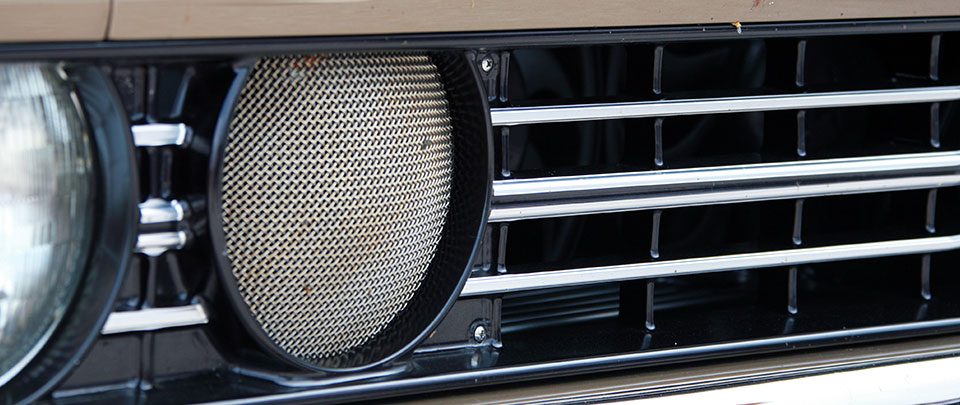
Use undiluted car-washing soap (Mothers® California Gold® Carnauba Wash & Wax is safe for this process) to pretreat that bug graveyard before washing the whole car. You can use a 100%-cotton, microfiber or sponge applicator to wipe it on, or apply it with spray bottle (thinned enough so that it’ll squirt). It’s even okay to gently rub that soap into the offending stuck-ons with two or three fingers. Full-strength car soap will break down the dead bugs and tar without stripping wax or dulling paint.
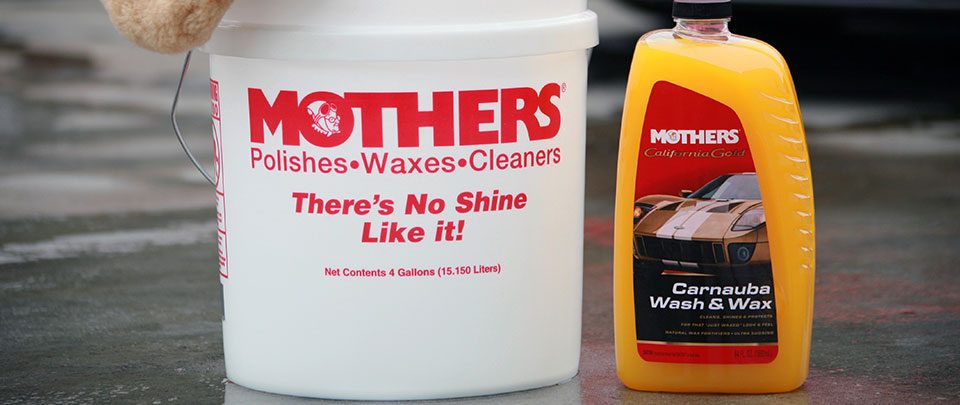
Only in specific cases. Full-strength car-wash soap is good for pretreating the bug deathscape on your grille or superdirt elsewhere on your rig, and more potent batches of car soap will make short work of deeply dirty areas of your car. In most cases, however, too much in the mix can leave a film on your vehicle – that stuff is thick and clingy, and wants to stick around. Use about an ounce of car wash per gallon of water and you’ll be fine. Fortunately, Mothers® car-wash soaps – at any strength – will not harm your automobile’s paint.
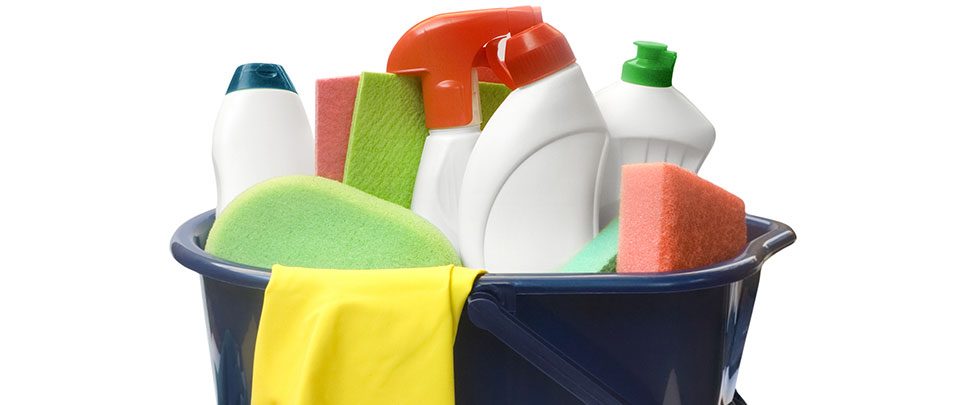
Household cleaning products – dishwashing detergent being the most common culprit – are specifically designed to do things that are bad for automobiles. In the case of dish soap, it’s designed to break down fats and sticky greases on your dishes: because automotive wax is essentially a grease, that dish soap will strip the wax coating you want on your paint, leaving it with little shine and no protection. Also, some household detergents have a micro-fine abrasive in them – these can permanently scratch your car’s paint’s surface.
Always use a high-quality commercial liquid car-wash soap, which should be formulated to remove dirt and grime without affecting your car’s essential coatings. The same goes for any other car cleaning – use car-cleaning products.
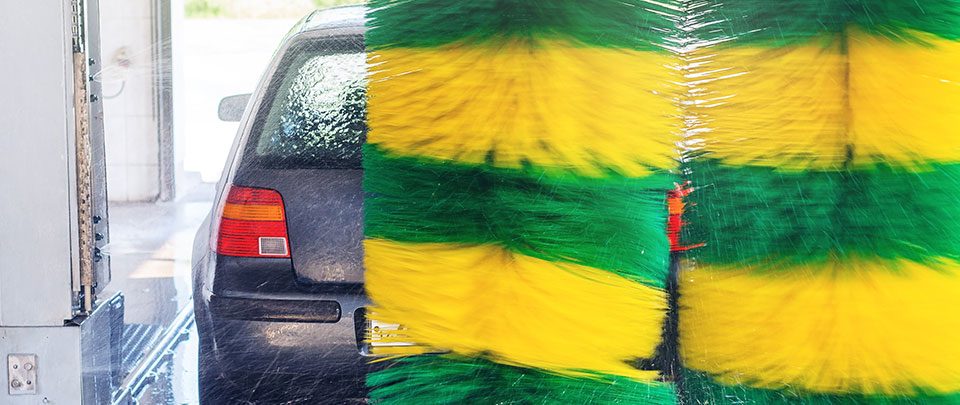
In regards to the free gas-station wash, you get what you pay for. Many of those car washes use mechanical brushes, which will probably damage paint unless they’re being wielded by super-smart car-washing robots (in which case, the machines have already taken control). Most automatic car washes used recycled water too, meaning your prized ride is getting the same water applied to it as the rusty 1974 Plymouth Volare that went through in front of you. In addition, while filters will catch most particles, they don’t get everything, and they can’t filter out dissolved road salt and leaked automotive chemicals. Unless you’re driving your ex’s car, or you prefer to be scrubbed with recycled Plymouth rustwater, avoid the autowash.
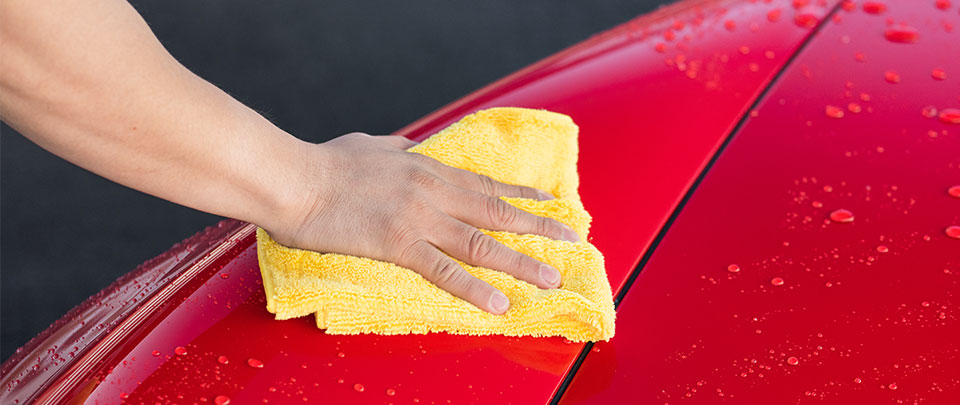
Long story short: soft towels.
Short story long: for years, Mothers® recommended 100%-cotton (no poly!) terrycloth towels for drying. They were the only game in town. Then microfiber towels came along. Now we recommend both (though we prefer high-quality microfiber). If you plan to use a “cotton” towel, you can test it to see if there’s any polyester (plastic) in it by holding a thread from the towel to an open flame. If there’s any plastic in that towel, the thread will ball up and leave a torched little wad of plastic, while 100% cotton burns to ashes.
Ultra-plush microfiber towels work as well, and many times better, then the best cotton. Microfiber is a poly product, sure, but the fibers are ultrafine and won’t damage paint. Microfiber towels come in various blends, qualities and sizes: a thick, soft weave of 80% polyester and 20% polyamide that’s about 16-inches square is ideal for drying. Microfiber towels have tremendous absorbency, wring easily and are scratch-free (once you remove the tag). You can dry an entire car with only one or two of them. Some people like to use larger microfiber towels to dry, and some are available with a waffle-weave fabric that’s super-absorbent. Whichever towels you choose, launder them separate from clothing or other towels, and without fabric softeners (which leave visible chemical traces on paint).

Do yourself a favor: think twice before smearing a $2.95 product on a $30,000 vehicle. It’s all about quality – once again, you get what you pay for. Premium ingredients cost more. Mothers® uses high-quality raw materials in our car-care products: just try a cheaper product and you’ll see the difference.
“Clear coat” is a name given to the multi-stage finish usually used by auto manufacturers, named after the top layer of a multi-stage paint (the clear coat). First, a base layer of paint (base coat), which contains the pigment (color), is applied to a primered body panel. Then, a top layer of clear paint (the clear coat) is applied over the base coat to add depth, brilliance and provide protection. Practically all vehicles manufactured today have a clear coat finish.
The easiest way to tell is to check the paint code on the inside of the glovebox door or doorjamb (or wherever your paint code is – it depends on the vehicle), or by reading your new vehicle’s window sticker. A more hands-on method is to check your applicator (sponge or towel) when you use any kind of polish. If you see any residue on the applicator that matches the color of the vehicle paint, then you do not have a clear coat – that color you see is the oxidized color coat from the vehicle being removed by the polish. With a good clear coat, the top layer of the finish is transparent and has no color to transfer to the applicator, even when you’re removing oxidized clear. Of course, if the clear coat has peeled away you will also see color, but by then there will also be a flaking clear coat to contend with, so polishing is pointless.
All these products clean and shine, but which one is right for your needs? If your main objective is to remove light fingerprints and dust, while adding a quick sparkle to the paint, a detailer is fast and effective. If you’re looking to thoroughly clean your car without pulling out a wash bucket and hose, then a waterless wash & wax is best. If you need a product with more staying power than detailers and waterless products, a spray wax fits the bill.
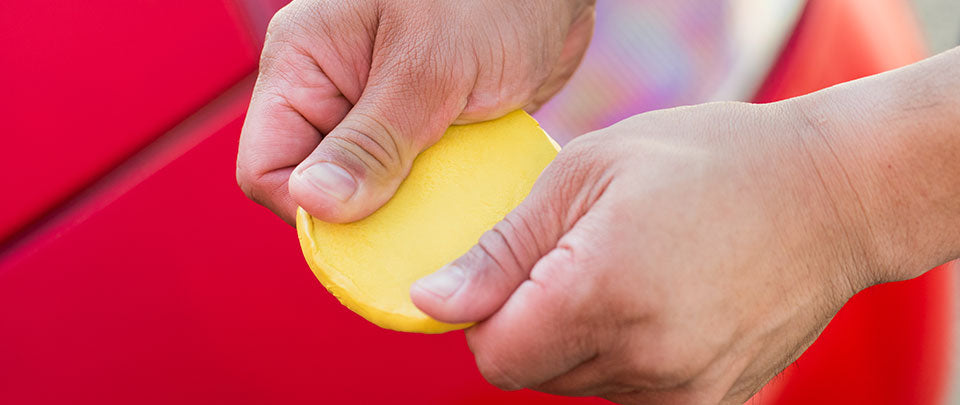
Clay bars and clay tools, like the ones offered by Mothers® (read about them in this guide), are used to remove contaminants from painted surfaces. Claying can pull out paint infectication that washing or polishing can’t, and it does so effectively and inexpensively.
To test if a clay would do your (auto) body good, run your hand over the freshly washed paint. If you can feel bumps in the paint – tiny little nits and sticky things that you’ll feel in the tips of your fingers – chances are you’d benefit from clay barring. Wash your car before using the clay bar (duh), and wax afterwards, because clay bars will remove wax from your car’s finish.
Paint polishes contain compounds that can reduce and/or remove scratches and marks in the surface of your paint, while waxes protect that paint with a clear, hard coating. The polishing medium in a polish is an abrasive that smoothes and clarifies. Waxes can be either synthetic or natural (you’ll often see the word “Carnauba” – it’s tree wax that provides desirable protection for auto paint). In essence, polishes remove minor imperfections and increase optical clarity, and waxes provide protection. Most modern waxes come with a mild polish already in them.
All paint-care schedules depend on the environmental conditions your sled typically endures. If your vehicle is kept garaged, then wax can last as long as six months. If your car is kept outdoors, sees harsh conditions or is a hard-case color like black, dark green or red, then it will need to be waxed more often. As a general rule, we recommend that a light-colored car be polished and waxed every three to four months. Dark-colored cars, on the other hand, will usually require more frequent attention. The paint on any vehicle that lives outside or experiences tremendous amounts of weather needs special protection – cut wax intervals in half.

You can employ a cleaner wax (a synthetic or natural wax that contains a mild polishing agent, like Mothers® Brazilian Carnauba Cleaner Wax or Synthetic Wax), as much as six times a year. If you wax more often than six times a year, perhaps you don’t need to polish every time – this is when you should consider adding a wax with no polishes in it to your car care regiment, like Mothers® Pure Brazilian Carnauba Wax.

No, not at all. With today’s modern formulations, paste waxes are just as cooperative as liquids. It’s a style-thing: what you choose is going to be based on your own preferences. In fact, paste products can be more economical: a can of paste wax will often last for more than twelve applications (so long as you’re not waxing a school bus), while liquids are frequently used up after four or five applications.
We don’t recommend it. You’re only going to waste product. Firstly, define “thick” – what’s that mean? How thick is not thick enough or too thick? When properly applied, a wax layer should only be a few microns thick. How are you going to know what’s thicker?
Secondly, a thickly gooped-on layer of wax is harder to remove, and you may cause streaking, smearing and piling (tiny wax balls accumulating on the paint) in the process. Your buffing towel will become saturated with wax, adding even more effort in the removal stage.
Our suggestion is wash your vehicle as often as possible during the winter months (preferably on days that get above freezing, because using hot water to wash a vehicle can strip wax). If a warm spell comes along, take advantage of it to get salt and winter road crud off your car, and get a fresh coat of wax on it in turn.
Read the instructions – any company that’s serious about its products will put an enormous amount of research into them, and they’ll know how best to use them. We do. Good directions on the package are the direct result of good research, and are written specifically to minimize effort and maximize results. There’s also going to be a list of caveats and no-nos on well-written product instructions, and if you don’t read ‘em, you won’t know ‘em.
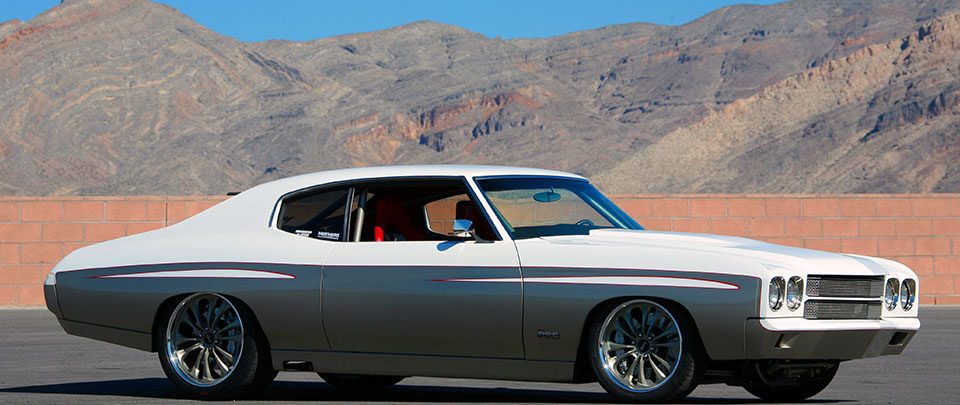
It’s always best to wax your car in the shade, out of the direct sunlight. When your paint’s finish gets hot, it “bakes” the wax as it’s applied, hardening it to a point where it can be difficult to remove. If you have no other option but waxing in the sun, then use a synthetic wax. But remember, the less sun, the better – try working in the early morning or late afternoon when the sun is at a low angle.
The list of things you own that cost more than your car is pretty short, and its finish deserves better than once-a-year products. Don’t scrimp on the quality of the products you use to maintain it, or the care you give your vehicle. A regular regimen of washing and waxing pay enormous dividends for years down the road. The intrinsic weakness of a once-a-year products will become painfully apparent as the years pass.
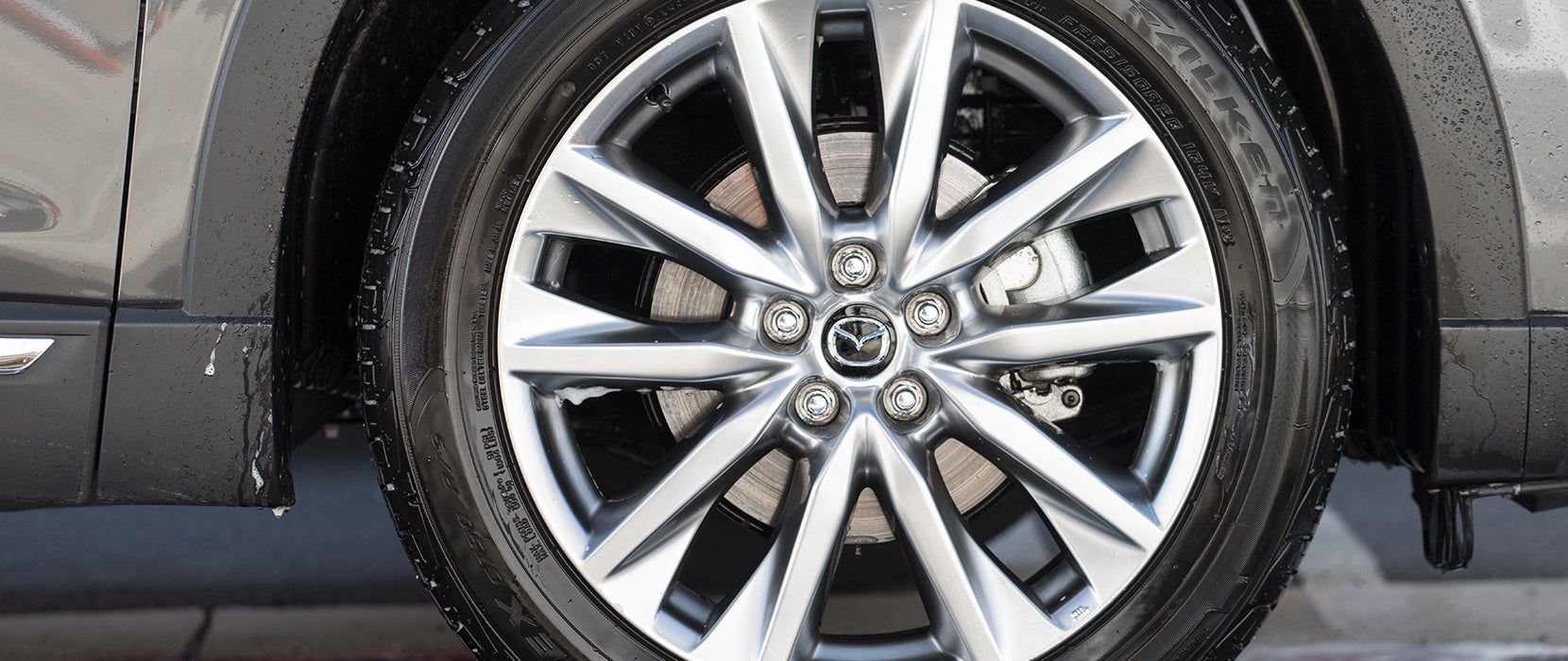
If you own a newer vehicle with factory alloy wheels (and they are not chromed or chrome-clad) – chances are they are clear coated. Automotive wheels are subject to severe conditions; heat, road-level debris, salt, grit and chemicals. Car manufacturers understand this, and coat the wheels with a plasticized, softer and thicker, and responds to other luster-improving chemicals better than regular paint polish.
Start by cleaning those wheels using the same car soap you used for the rest of the car (a stronger mix is fine for brake-baked and grimy wheels). To improve the shine and luster of clear coated wheels, use a plastic polish like Mothers® Plastic Polish or PowerPlastic 4Lights® on them. The plasticized paint on your wheels will respond best to a plastic polish, though any cleaner wax will help clean, clarify and protect.
When dealing with any automotive wheel, refer to the wheel section in this guide: it offers a collection of solutions for almost every type of wheel, including non-coated aluminum (use Mothers®’ world-famous Mag & Aluminum Polish), chrome plated (try Mothers® Chrome Polish), and a host of other wheel types. Take time to study the Detail Guide for help deciphering exactly what sort of wheels you have, and the many caveats for cleaning them all – their finishes can be complicated, can be easily marred, and are expensive to fix.

Simple – get them off as quick as possible. Spray-on paint products like Mothers® Waterless Wash & Wax or Instant Detailer are ideal for this purpose. Keep detailer and a clean terrycloth or microfiber towel in your sled at all times, because when you’ve got to remove the worst water spotting, you’ve got to do it ASAP (the faster you get to it, the less time the chemicals in the “spot” have to etch the finish). In addition, don’t let the sun bake those water spots, or they’ll be even tougher to remove. Detailing spray also works great to save your finish around the fuel door, in case you spill gas while refueling.
If water spots have been around for awhile, work them with a polish – like the one found in Mothers® Scratch Remover. Follow up with a traditional wax in order to ensure the paint is properly protected.
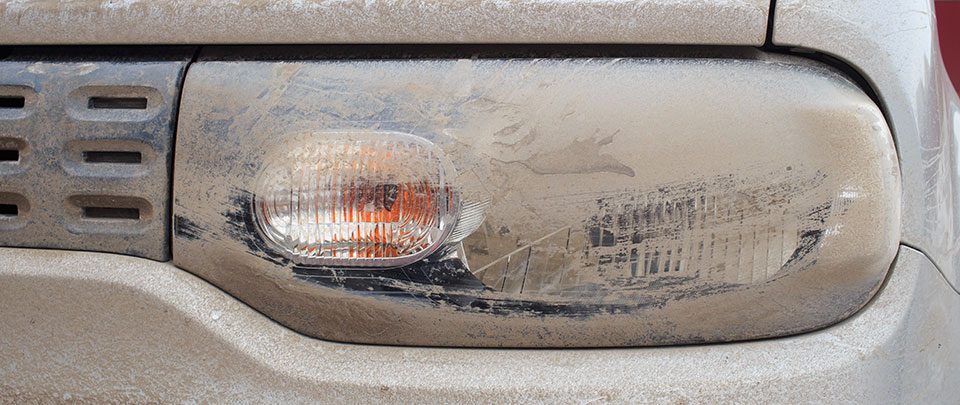
Chances are, you’ll care much more when the lease ends. Check your contract: you’re probably responsible for the appearance of your vehicle when it is returned. If the paint is dull and lifeless (because it was never washed, polished or waxed), you could be hit with a reconditioning fee. Doubt us and try it – you’ve been warned.